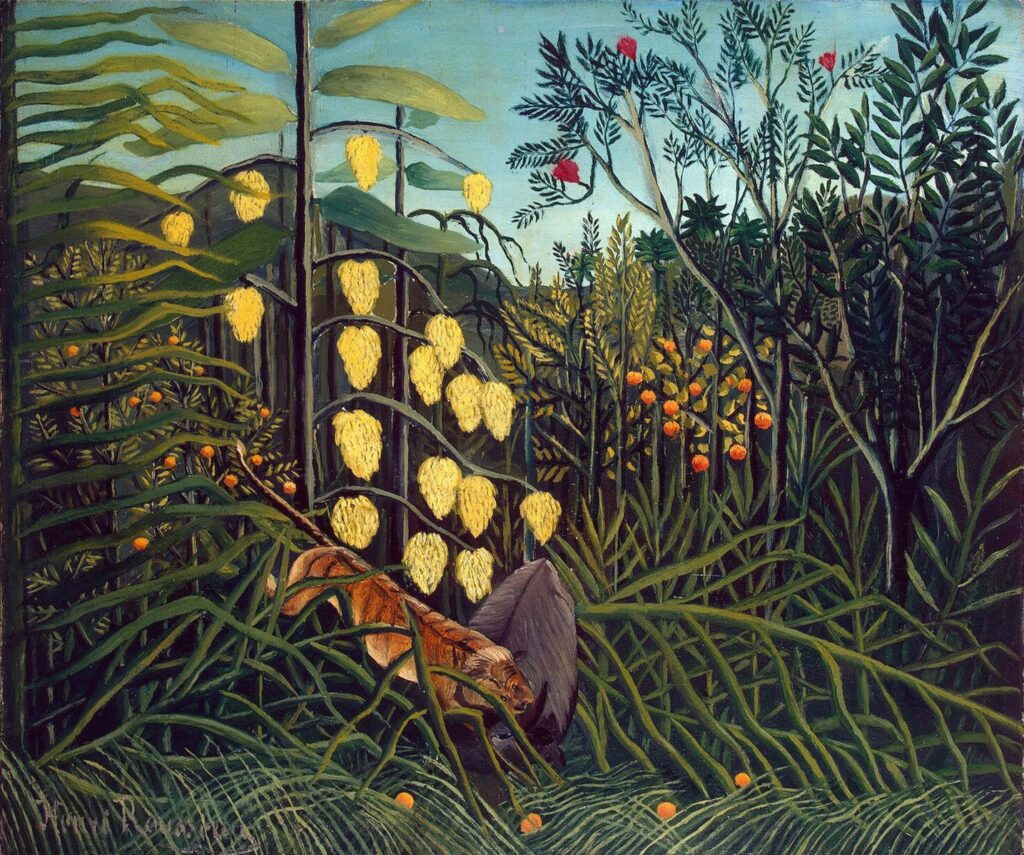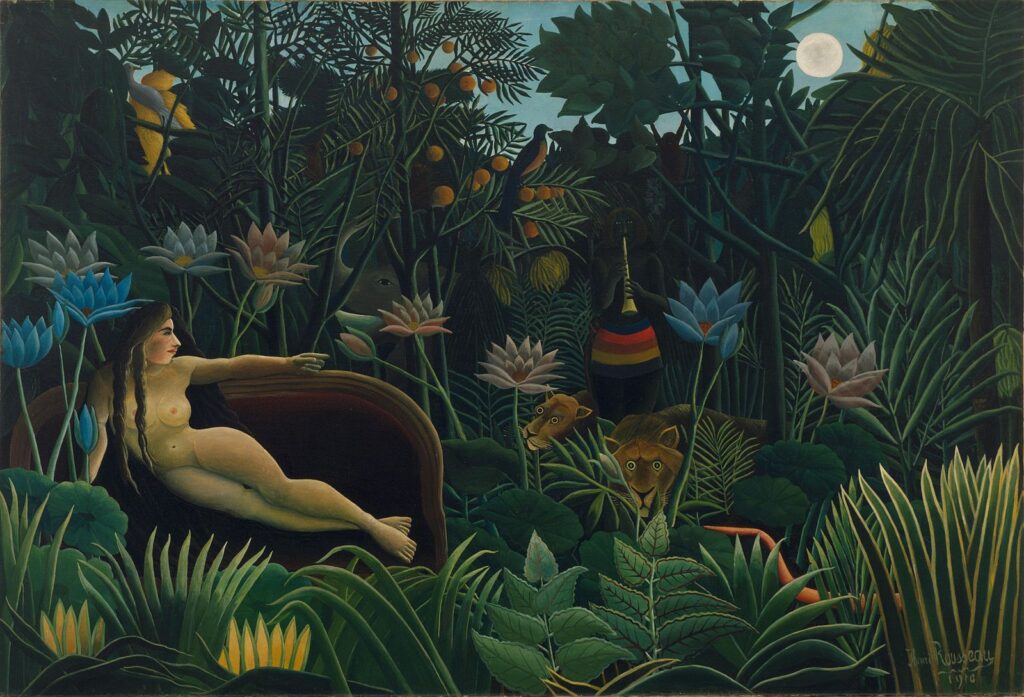The late 19th and early 20th century was a period of rapid colonization by Great Britain and other European nations. As artists were exposed to the art of other non-Western cultures from around the world it ignited an art movement called “Primitivism.”
Artists were eager to latch onto something new and break away from traditional academic conventions of what defined art. Instead of taking inspiration from the ancient Greeks and Romans, artists sought inspiration from so-called “primitive” art, which included African, Oceanic, and Indigenous art forms.
This movement had a profound impact on various art forms, including painting, sculpture, and literature. It played a crucial role in shaping the trajectory of modern art.
Notable artists associated with Primitivism include Paul Gauguin, Pablo Picasso, and Henri Matisse, among others. In this article, we will dive into the fascinating history of primitivism and how it has shaped modern art.

Historical Context of Primitivism
In the late 19th and early 20th centuries, a palpable shift was underway. The world was rapidly changing, marked by the industrial revolution, urbanization, and a growing sense of disconnection from nature and authenticity.
Artists and thinkers, dealing with the consequences of industrialization, yearned for a return to a more simpler, unspoiled existence. Against this backdrop, the seeds of Primitivism in art found fertile ground.
This movement emerged as a reaction against the perceived artificiality of Western societies. Technological advancements and urbanization seemed to distance humans from nature and tradition.
The complex social dynamics of the time, including the rise of mass production and the displacement of rural communities, fueled a desire among artists to reconnect with more authentic and primal forms of expression.
Primitivist artists sought inspiration from cultures they considered “primitive” — a term then used to describe non-Western societies. This quest for authenticity and a return to nature was a deliberate effort to find solace in the untarnished roots of human creativity.
Key Characteristics of Primitivism
As Primitivism in Art began to take root, certain key characteristics defined it and set it apart from the artistic norms of the time.
Influence from Non-Western Cultures:
Central to Primitivism was a profound fascination with the art of Africa, Oceania, and the Americas. Artists like Paul Gauguin found inspiration in the simplicity, spirituality, and authenticity they perceived in these non-Western artistic traditions.
Folk Art and Naïve Styles
Primitivist artists embraced the untrained, spontaneous qualities of folk art. They sought inspiration from the works of self-taught or “naïve” artists, appreciating the raw and unfiltered expressions found in the creations of individuals outside the academic art world.
Simplification and Symbolism
Primitivism favored a simplified visual language. Artists like Henri Rousseau and Amedeo Modigliani employed bold colors, flattened perspectives, and symbolic elements to convey essential meanings rather than intricate details.

Spiritual and Mythical Themes
Primitivist artworks often delved into spiritual, mythological, or ritualistic subjects.
Rejection of Academic Conventions
Primitivism marked a rebellion against the academic conventions of Western art institutions. Artists aimed to break free from established norms, seeking a more instinctive and emotionally charged mode of expression.
Prominent Artists and Their Contributions
As primitivism in art took off, many artists emerged from this movement who have gone on to become household names. These trailblazing artists not only defined the movement but left their own unique mark on contemporary art.
Paul Gauguin:
Paul Gauguin removed himself from the industrialized world and moved to Tahiti. His vivid paintings, such as “Where Do We Come From? What Are We? Where Are We Going?” and “Spirit of the Dead Watching,” reflect his immersion in Tahitian culture, blending the mystical with the everyday.

Henri Rousseau:
Henri Rousseau was a self-taught painter celebrated for his dreamlike jungle scenes. His works, including “The Sleeping Gypsy” and “The Dream,” showcase his embrace of a simplified, almost childlike, style.
Amedeo Modigliani:
An Italian artist associated with the School of Paris, Amedeo Modigliani’s portraits stand out for their elongated forms and stylized features. His sculptures, such as “Head” and “Caryatid,” reveal a fascination with African and Oceanic art.
Pablo Picasso:
While best known for co-founding Cubism, Picasso underwent a “Primitivist” or “Tribal” phase. “Les Demoiselles d’Avignon” is a landmark work that reflects his connection with Iberian and African art.
Primitivism’s Impact on Modern Art
Primitivism played an important role in influencing key art movements of the early 20th century. Cubism, spearheaded by Picasso and Georges Braque, absorbed Primitivist aesthetics, while Fauvism, led by artists like Henri Matisse, embraced bold colors and simplified shapes.
Expressionism was also deeply influenced by Primitivism. Particularly in its exploration of raw emotion and instinctual impulses.
The appeal of Primitivism fostered a cross-cultural dialogue that was not seen before. It challenged the Eurocentric lens through which art had traditionally been viewed.
The movement’s embrace of non-Western influences prompted a reevaluation of artistic canons, paving the way for a more inclusive and diverse understanding of global art traditions.
Critiques and Controversies
While Primitivism in art stirred a revolution in the artistic landscape, it also faced its share of critiques and controversies. It prompted reflections on cultural appropriation, Eurocentrism, and the complexities of artistic interpretation.
Cultural Appropriation
One of the primary criticisms leveled against Primitivism is its borrowing from non-Western cultures without always understanding or respecting their socio-cultural contexts. Accusations of cultural appropriation highlight the risk of reducing diverse traditions to mere aesthetic inspirations, overlooking their rich histories and significance.
Eurocentrism
Some critics argue that Primitivism perpetuates Eurocentrism by positioning Western artists as discoverers or interpreters of non-Western cultures. The tendency to exoticize and romanticize these cultures raises concerns about reinforcing colonial narratives.
Colonial Context
The era when Primitivism flourished coincided with the height of European colonialism. The movement’s fascination with the “primitive” can be seen as intertwined with colonial attitudes. It raised questions about the ethical implications of artistic expressions that emerged during this period.
Responses to Critiques
Defenders of Primitivism argue that, despite its imperfections, the movement played a crucial role in broadening the artistic dialogue. But it also exposed people to cultures they would have otherwise never experienced.
They assert that artists were grappling with a changing world, seeking new forms of expression and engaging with diverse influences in a genuine pursuit of authenticity.
The critiques and controversies surrounding Primitivism underscore the complexities of artistic interpretation and cross-cultural engagement. The legacy of Primitivism reminds us of the delicate intersection between art, cultural understanding, and the ethical responsibilities of artists.
References
PRIMITIVISM
https://www.theartstory.org/movement/primitivism
Primitivism
https://en.wikipedia.org/wiki/Primitivism
Primitivism
http://www.visual-arts-cork.com/history-of-art/primitivism.htm